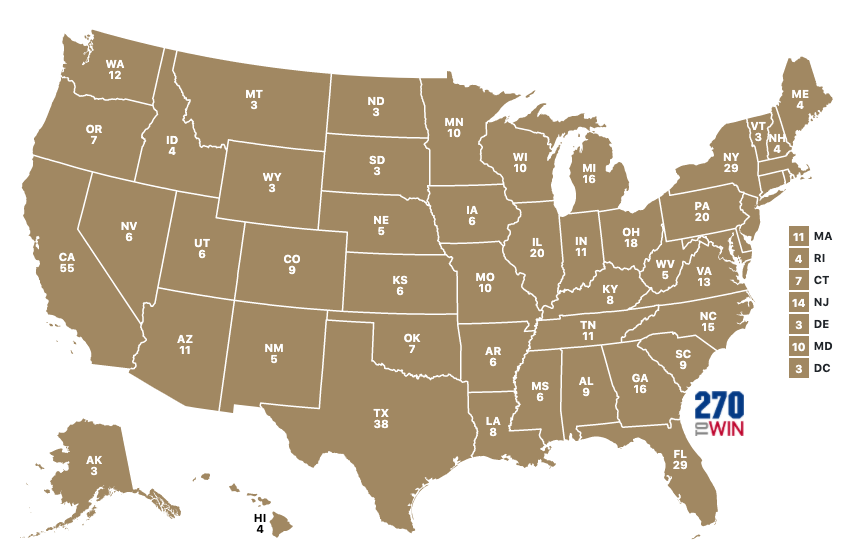The Electoral College, Explained
The United States operates under what is called a ‘representative democracy.’ What this means is that anyone in office – from local to federal government – has been elected by the people, for the people. The majority of the elections in this country are decided by a popular vote, such as determining a governor or Senator. Popular votes are a pretty straightforward system where whoever gets the most votes is elected to the position. However, the presidential election operates a little differently. Presidential elections are decided using the electoral college.
What is the electoral college?
The electoral college is a system that assigns ‘point values’ – called electoral votes – to each state. Electoral votes are determined by adding the number of Senators a state has (always two) with the number of representatives in the U.S. House (which itself is determined by the population size) to get a total. Kansas, for example, has six electoral votes: two Senators, and four members of the House.
How does it work?
People go out and vote for which candidate they want, just like in every other election. Then, all the votes in a state are counted to find which candidate got the most votes in that state (note: Nebraska and Maine use the District Method of voting, which means that candidates ‘win’ individual districts rather than the whole state). While there are multiple candidates on a ballot – not just a Democratic and a Republican one – very rarely do they garner the support needed to win a state. States will typically be classified as “red states” or “blue states.” Kansas, which generally has a majority Republican population, has been a red state for several decades. California, on the other hand, has a majority Democratic voting population so its 55 votes generally go to the Democratic candidate. A candidate needs a total of 270 electoral votes to win the presidency, regardless of the results of the popular vote.
Understanding swing states
This is where the “swing states” really come into play. A swing state is one that has pretty even support for both major political parties, and where official polls show similar numbers for both sides. Generally speaking, these are the states that candidates campaign in the most: a Democrat knows it will be nearly impossible to flip a historically red state, and a Republican knows they are likely never going to sway a blue state to their side. This election, political analysts have identified six major states to keep an eye on: Arizona, Florida, Michigan, North Carolina, Pennsylvania, and Wisconsin. The right combination of these states could win either candidate the election, but neither will know how successful they’ve been until the final results have been announced.
Why do people take issue with the electoral college?
One of the most common complaints with the electoral college is that it can allow a president to be elected even if they did not win the popular vote – this is what happened in 2016. Hillary Clinton had gotten over three million more votes than Donald Trump, but as Trump had gotten larger states on his side he won the electoral college and the presidency. It is important to note, however, that this scenario rarely happens outside of very close elections.
What if there’s a tie?
If the election ends with a 269-269 electoral tie, then the vote is in the hands of the House of Representatives, with the two representatives from each state voting as a unit. The only other time this has ever happened was in the election of 1836, but that was to determine a Vice President (back then, there were two separate races: one for President and one for Vice President).
The important thing to remember in any election is never to assume an outcome. Just because a state has a history of voting one way does not guarantee that they will continue that voting pattern. Unless either candidate has a near-unbeatable lead, there is no completely accurate way to guess the outcome of an election before it is officially announced.

HI! My name is Taylor Dent, and this is my senior year. This is my second year in SPUB, and my first as Editor-in-Chief. In addition to being part of SPUB,...


